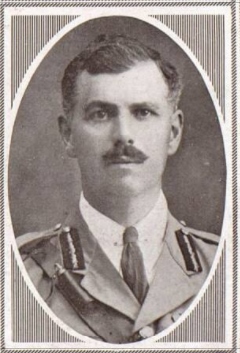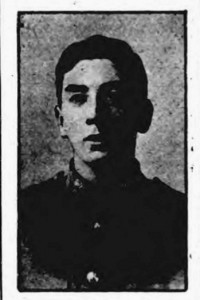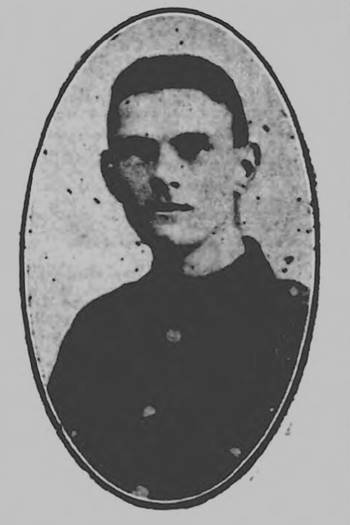This article is about the Pieta Military Cemetery in Malta and looks at some of the soldiers buried there. I have written a separate article on the Indian Memorial which can be found in the cemetery:
Pieta Military Cemetery
Pieta Military Cemetery contains the graves of over 1,400 Commonwealth service personnel who died on Malta. Over 1,300 burials date from the First World War with the Commonwealth War Graves Commission (C.W.G.C.) also caring for over 700 graves which date from before and after the two world wars. The cemetery is located a short walk from Valetta, just past the Ta-Braxia Cemetery as you walk downhill from the city.
As you enter the cemetery you will be greeted by row upon row of graves to soldiers of the British garrison who died in the pre-war era. Due to its strategic position in the Mediterranean, Malta always held a large garrison. In addition, its port meant that ships often called into the island and sick men were left behind in one of its hospitals. If you click on the photograph below you will see the variety of regimental badges shown on the graves. The cemetery also contains unit memorials listing all the officers and men of a unit who died while it was stationed at Malta. These are very common in garrison cemeteries throughout the former British Empire.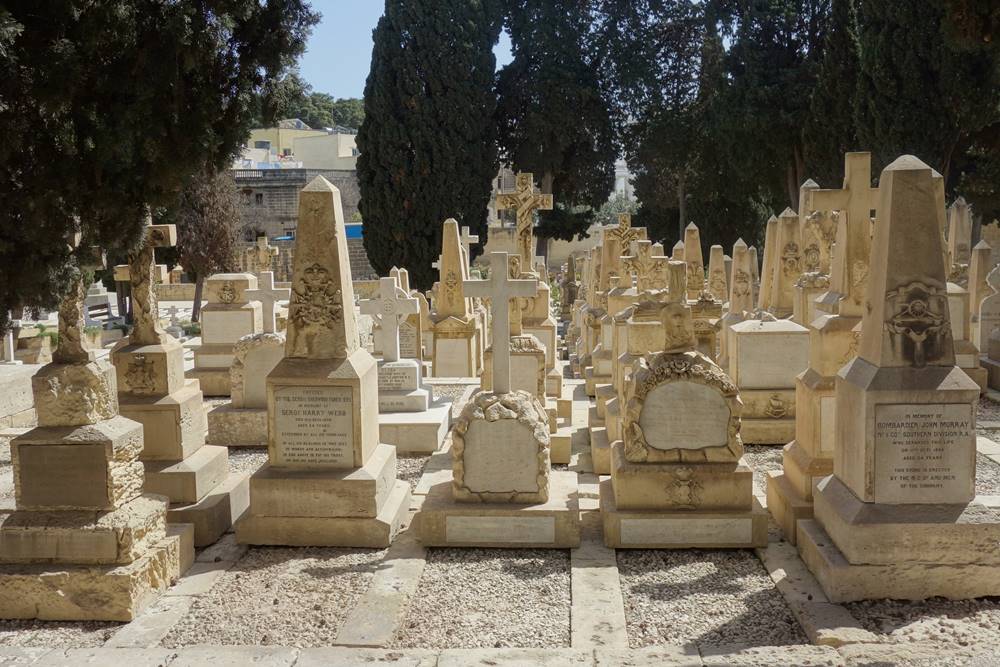
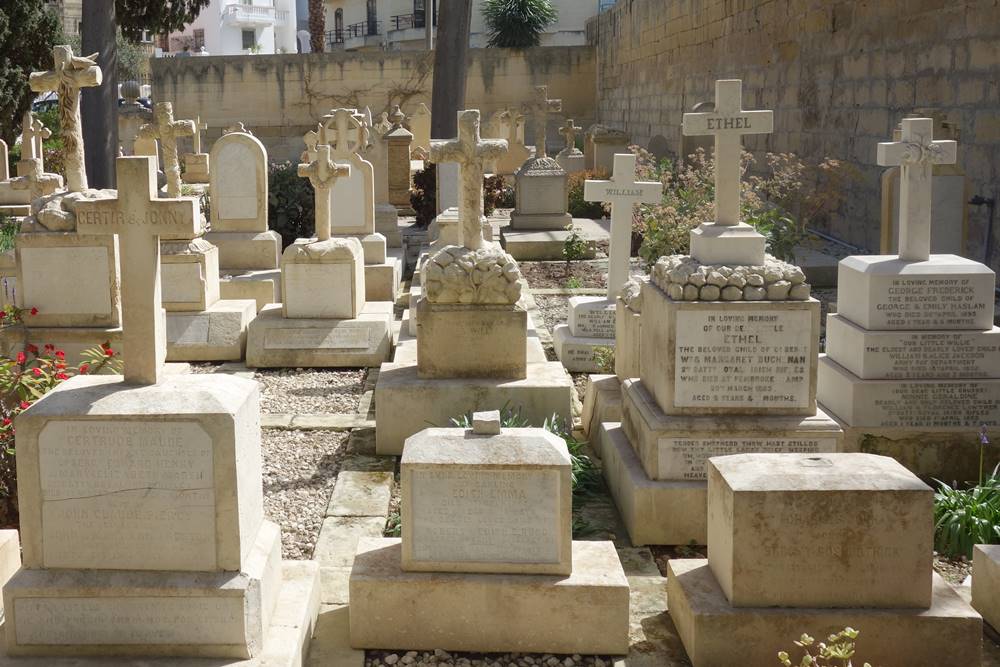
The interior is beautifully kept, and presents from the entrance, with its lines of weeping willows, an imposing and impressive appearance, embellished by sculpture, in stones, crosses and other memorial tributes. Recent interments are marked by heaps of flowers, constantly renewed by visitors, whose kindly thought for the lonely occupants touchingly signifies sympathy and affection for somebody’s dear one, and for those afar who mourn their loved and lost at rest in Malta’s bosom.
The cemetery’s cross of sacrifice is shown below and you can see a couple of private memorials, including one to Second Lieutenant Herbert Churchill Royal Engineers. The vast majority of Commonwealth graves in Malta are in collective burials, typically of three to four individuals. This is due to the shallow earth found on Malta and the need to cut graves into the hard rock below.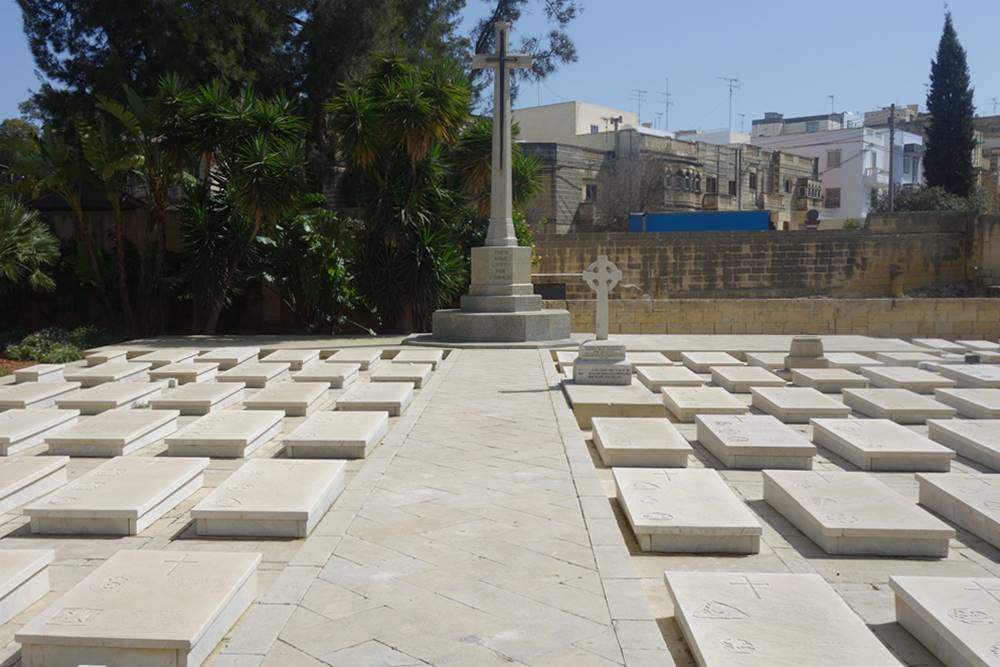
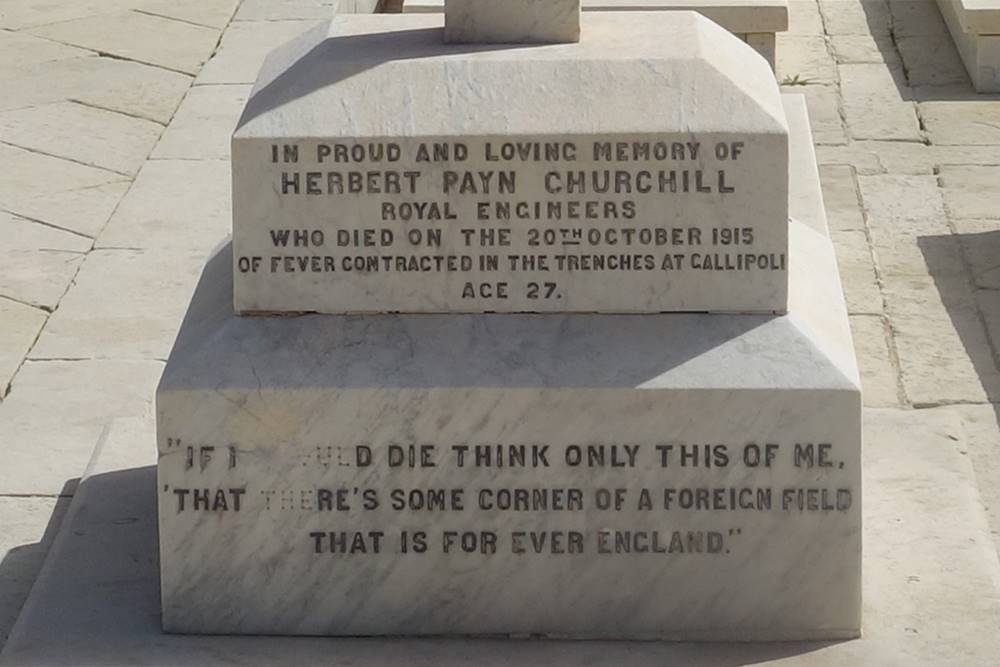
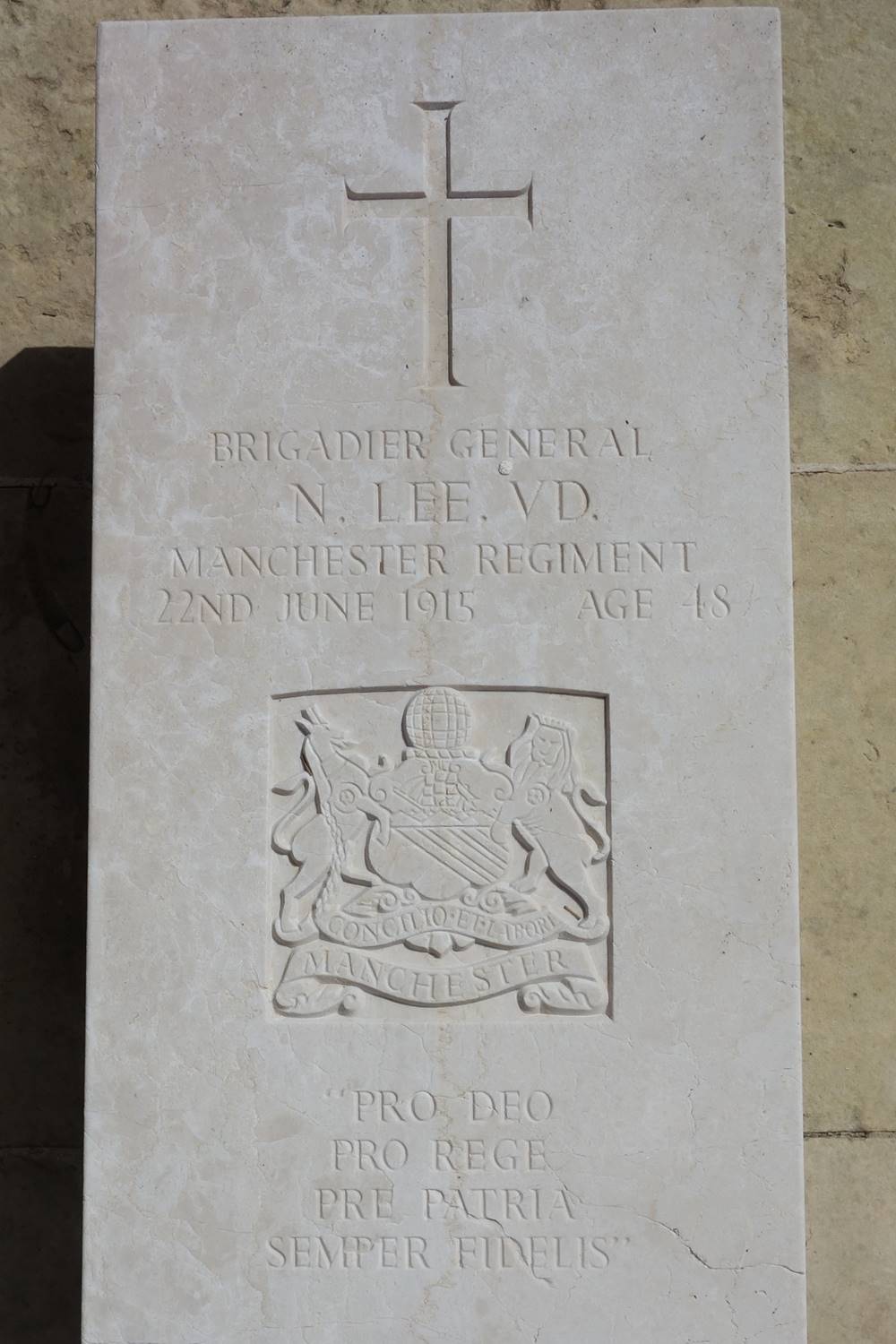
Another soldier who is buried in the cemetery is Trooper Charles Setoun Harvey, who served with the Lothians and Border Horse in France and Salonika. Charles died of malaria and dysentery in hospital at Malta on 19 October 1916 and was buried the next day. He was a warehouseman in Harwick before the war, and the only son of Mr and Mrs Harvey of Minto, Harwick. The Salonika Campaign was one of the forgotten fronts of the war as Allied forces fought against Bulgarians in the Balkans. The main British effort was along the present-day Greek-Bulgarian and Greek-Macedonian border. Disease decimated the Allied forces involved, especially malaria. The strain of malaria in Salonika wasn’t as deadly as that found elsewhere and it was probably the combination of dysentery and malaria which caused Charles death.
In its 16 October 1915 edition, The Surrey Advertiser and County Times announced the death of one of its former staff members, Leslie Dowden. Leslie was serving with the 2/4th Battalion The Queen’s (Royal West Surrey Regiment) when he was wounded at Suvla Bay during the Gallipoli Campaign. Invalided to Malta, Leslie died on 28 September 1915 and is buried in the Pieta Military Cemetery. The newspaper carried a full column reporting his death and included part of a letter written by a Private H. Hann, dated 30 September:
Dear Mrs Dowden, – I am taking this liberty, as a close friend of your son, to write and let you know just a wee bit more than the cold official announcement will convey to you regarding his death from wounds in St. Andrew’s Hospital on Tuesday evening… A soldier here in Malta receives all the attention that is possible to be given, and I am sure it was not lacking in his case. I wrote to him whilst lying in Cottonera Hospital myself, but never had a reply, and intended to visit him this coming Saturday when I went into Valetta.
The Malta paper stateS that he was buried on Wednesday (September 29) at Pieta Cemetery, and that a wreath was placed on his coffin bearing the words: “Malta’s tribute to dead heroes: with deepest sympathy from the Malta Daily Chronicle Fund. This paper places a wreath on the coffin of every soldier who dies in Malta… Whilst in Valetta on Saturday I will visit his grave, and silently and reverently pay my last tribute to a personal friend of whom I shall ever cherish the sweetest of remembrances.

